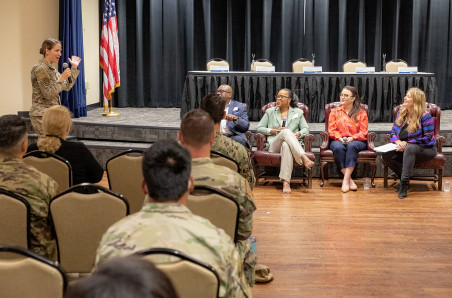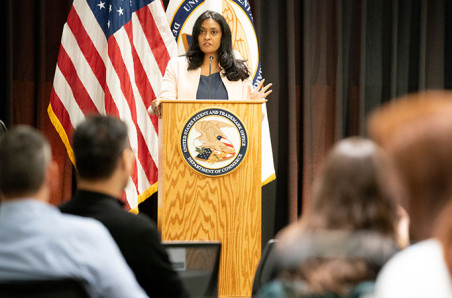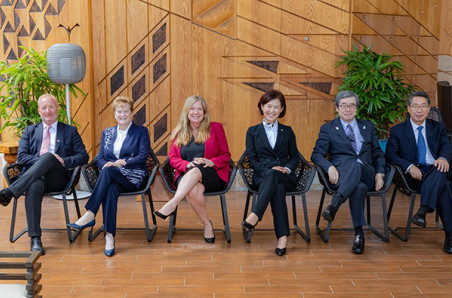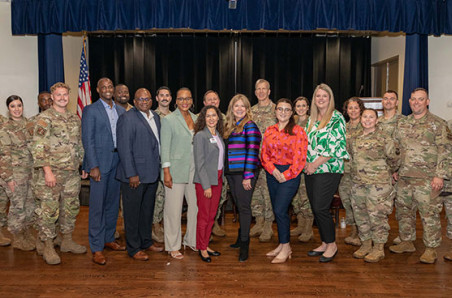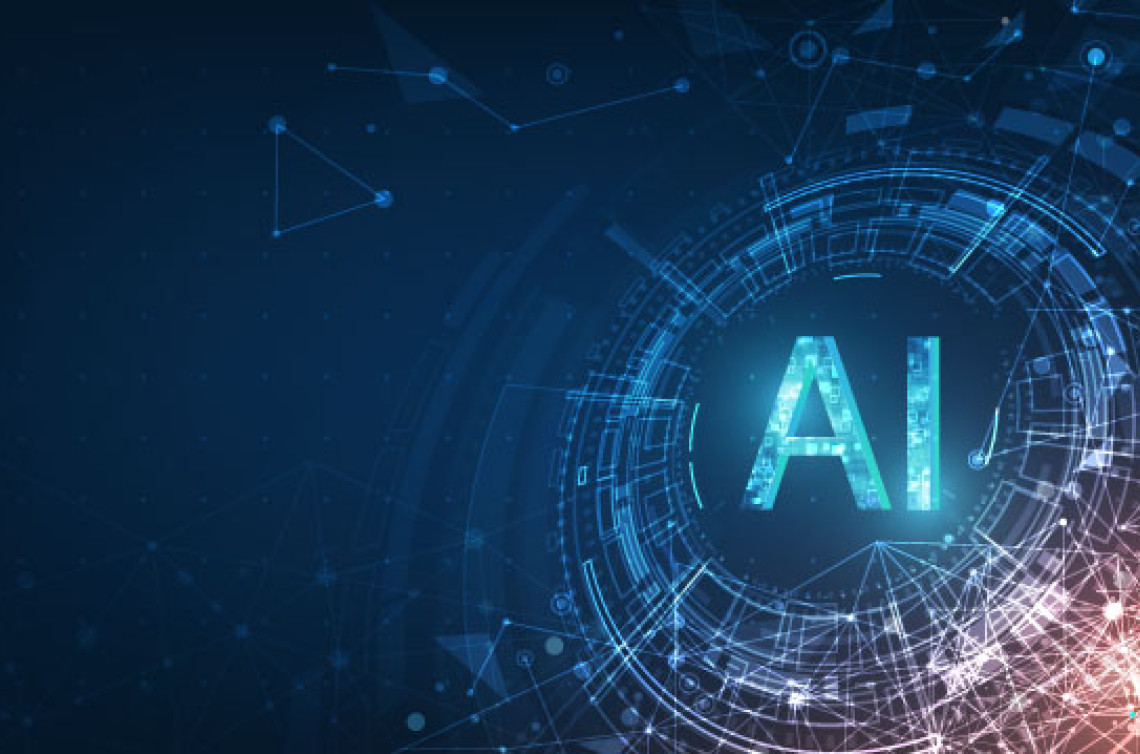
AI and inventorship guidance: Incentivizing human ingenuity and investment in AI-assisted inventions
Today, based on the exceptional public feedback we’ve received, we announced our Inventorship Guidance for AI-Assisted Inventions in the Federal Register. The guidance, which is effective on February 13, 2024, provides instructions to examiners and stakeholders on how to determine whether the human contribution to an innovation is significant enough to qualify for a patent when artificial intelligence (AI) also contributed. The guidance embraces the use of AI in innovation and provides that AI-assisted inventions are not categorically unpatentable.
The guidance instructs examiners on how to determine the correct inventor(s) to be named in a patent or patent application for inventions created by humans with the assistance of one or more AI systems. Additionally, we’ve posted specific examples of hypothetical situations and how the guidance would apply to those situations to further assist our examiners and applicants in their understanding.
Bolstered by the Executive Order on the Safe, Secure, and Trustworthy Development and Use of Artificial Intelligence, the Department of Commerce is taking the lead on providing a key framework that guides our nation’s approach to AI and its intersection with intellectual property (IP).
Included in the Executive Order (EO) were specific USPTO directives that enhance the great work our agency started last year, including:
- Providing guidance to our patent examiners and applicants addressing inventorship and the use of AI, including generative AI, in the inventive process, including illustrative examples in which AI systems play different roles in inventive processes and how, in each example, inventorship issues ought to be analyzed;
- Issuing additional guidance to our patent examiners and applicants on patent eligibility to address innovation in AI and critical and emerging technologies and other considerations at the intersection of AI and IP; and
- Consulting with the U.S. Copyright Office to issue recommendations to the President on potential executive actions relating to copyright and AI, including addressing the scope of protection for works produced using AI and the treatment of copyrighted works in AI training.
The patent system was developed to incentivize and protect human ingenuity and the investments needed to translate that ingenuity into marketable products and solutions. The patent system also incentivizes the sharing of ideas and solutions so that others may build on them. The right balance must be struck between awarding patent protection to promote human ingenuity and investment for AI-assisted inventions while not unnecessarily locking up innovation for future developments.
To that end, the guidance provides that patent protection may be sought for inventions in which a human provided a significant contribution to the invention. The guidance builds on the existing inventorship framework and the “significant contribution” test from the Federal Circuit's 1998 Pannu case (Pannu v. Iolab Corp., 155 F.3d 1344 (Fed. Cir. 1998)), which patent examiners have been applying for decades. Instead of considering whether or not the contributions of the AI system to an invention would rise to the same level of inventorship if those contributions were made by a human, the key question this guidance helps address is whether the human named on a patent made a significant enough contribution to be a named as an inventor. To secure patent protection, there must be at least one named human inventor who meets that requirement.
The specific examples we have provided help explain how the guidance will be applied. For example, they show that merely recognizing a problem and presenting that problem to an AI system is not enough to establish someone as an inventor. That said, if an individual made a significant contribution through the construction of a prompt, that could be sufficient. However, maintaining “intellectual domination” over an AI system, does not, without more, make a person an inventor of any inventions created through that AI system.
As AI becomes ubiquitous, including as people build on each other's AI-assisted inventions, it will become increasingly difficult to identify the ways in which AI plays a role in the inventive process. Therefore, the USPTO is not, at this time, implementing any new requirement to disclose the use of AI, beyond that which is required in rare circumstances by USPTO rules.
The USPTO will continue to presume that the named inventor(s) in an application are the actual inventor(s). And applicants will continue to be responsible for meeting their existing duties to the USPTO. Only in the rare instance where an examiner determines from the file record or extrinsic evidence that one or more of the named inventors may not have invented the claimed subject matter would questions of inventorship be raised during examination. From an examiner's perspective, it will not matter if AI, or other advanced computer system, performed actions that would rise to the level of inventorship. What matters, under the guidance, is whether at least one human's actions can be shown to rise to the level of inventorship and is listed as an inventor on the application.
This guidance does not entitle inventors to a patent. The patents must also meet all the other criteria for patentability including patent eligibility, novelty and nonobviousness. The USPTO is also assessing these other criteria in view of AI.
Lastly, because the patent system is built to encourage the sharing of ideas and solutions so that others may build on them, the guidance does not take into consideration whether any intellectual property was utilized in the training of any AI systems used as part of the inventive process. A patent only gives the applicant exclusive rights to their invention, and does not give the applicant the right to use someone else's invention. For example, when an applicant invents on top of another patent, it is up to the applicant to secure whatever other IP rights they need to use their invention.
To learn more about what the guidance is and is not, and to get your questions answered and provide feedback, we invite you to attend our upcoming public webinar on March 5 from 1-2 p.m. ET.
The USPTO will also be engaging with its international counterparts to discuss the inventorship guidance and the future of patenting AI-assisted inventions with the aim of harmonizing AI policy across borders. The USPTO is taking an iterative approach with the guidance so we will continue to engage with stakeholders, both here and abroad, to determine if any updates or additional guidance is needed. To provide your feedback by the May 13, 2024 deadline, visit the Federal Register.
In addition to providing the inventorship guidance, we have also been working on guidance related to other AI and emerging technology IP policy matters. We have issued guidance for practitioners using AI when practicing before the Patent Trial and Appeal Board (PTAB) and Trademark Trial and Appeal Board (TTAB). We are working on additional guidance for practitioners using AI, as well as updating patent eligibility guidance relating to AI inventions, and will be seeking public input on the way in which AI impacts other aspects of patentability.
I also want to thank all of you who provided comments to the Copyright Office's Notice of Inquiry (NOI) related to the intersection of AI and copyright. In consultation with the Copyright Office, the USPTO is working to help inform U.S. policy on these issues. The underlying principles supporting the copyright system and the patent system – while both encouraging and incentivizing creativity – are a little different, with copyright protection providing exclusive rights to the creator of the original work of authorship and works that derive from that original (subject to exceptions such as fair use), while the patent system provides protection to different inventors for their inventions that build off or improve an original work.
We will be further exploring these issues and more at a public symposium on IP and AI at Loyola Law School in Los Angeles, on March 27 (both in person and remotely). The symposium – which will include representation from the Copyright Office – will build on previous AI/Emerging Technologies (ET) partnership events and feature panel discussions by experts in the field of patent, trademark, and copyright law that focus on (1) a comparison of copyright and patent law approaches to the type and level of human contribution needed to satisfy authorship and inventorship requirements; (2) ongoing copyright litigation involving generative AI; and (3) a discussion of laws and policy considerations surrounding Name, Image, and Likeness (NIL) issues, including the intersection of NIL and generative AI.
While we play our role in shaping U.S. policy, including through engagements with the public and with Congress, we are also working internationally and across U.S. government to support the National AI Initiative and other initiatives set forth in the EO. Recently, we partnered with the National Science Foundation on their National Artificial Intelligence Research Resource (NAIRR) pilot, bringing together 10 federal agencies and 25 private sector, nonprofit, and philanthropic organizations to build a shared AI research infrastructure. We are also working closely with the National Institute of Standards and Technology (NIST) on ways to strengthen U.S. leadership and competitiveness in advancing technologies critical to the nation's economy and security. I look forward to further discussing our AI efforts over the course of the next few months, including with leaders and experts from across the world at this month's World Governments Summit on AI.
We invite you to learn more about these events and initiatives on our AI and ET Partnership page. We look forward to working with all of you to further build AI policy to promote a safe and bright future for all Americans.
Engage with the Director and join the conversation on our social media channels.



